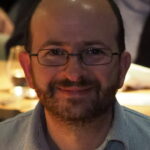Link to Pubmed [PMID] – 17827301
J. Bacteriol. 2007 Nov;189(22):8257-69
The highly conserved WalK/WalR (also known as YycG/YycF) two-component system is specific to low-G+C gram-positive bacteria. While this system is essential for cell viability, both the nature of its regulon and its physiological role have remained mostly uncharacterized. We observed that, unexpectedly, Staphylococcus aureus cell death induced by WalKR depletion was not followed by lysis. We show that WalKR positively controls autolytic activity, in particular that of the two major S. aureus autolysins, AtlA and LytM. By using our previously characterized consensus WalR binding site and carefully reexamining the genome annotations, we identified nine genes potentially belonging to the WalKR regulon that appeared to be involved in S. aureus cell wall degradation. Expression of all of these genes was positively controlled by WalKR levels in the cell, leading to high resistance to Triton X-100-induced lysis when the cells were starved for WalKR. Cells lacking WalKR were also more resistant to lysostaphin-induced lysis, suggesting modifications in cell wall structure. Indeed, lowered levels of WalKR led to a significant decrease in peptidoglycan biosynthesis and turnover and to cell wall modifications, which included increased peptidoglycan cross-linking and glycan chain length. We also demonstrated a direct relationship between WalKR levels and the ability to form biofilms. This is the first example in S. aureus of a regulatory system positively controlling autolysin synthesis and biofilm formation. Taken together, our results now define this signal transduction pathway as a master regulatory system for cell wall metabolism, which we have accordingly renamed WalK/WalR to reflect its true function.

